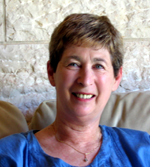By Dorothea Shefer-Vanson

DEAD SEA, Israel –If one lives in Israel long enough one cannot escape being brushed by the wings of history. One week in my life recently took me – metaphorically — across continents and eras.
On Tuesday I joined a group of friends for a guided tour of the home of Shai Agnon, Israel’s only Nobel Prize laureate for literature. The house is situated in the Talpiot neighbourhood of Jerusalem, now a fairly prosperous suburb but in the 1920s, when Agnon commissioned its construction, a fairly remote spot. After the customary tour and explanations one of the members of our group stood up and said ‘I have a personal connection with Agnon.’ She proceeded to tell us about the close relationship between her late grandfather, who was a rabbi in Leipzig, Germany, and Agnon during the latter’s sojourn in that town. The two men studied the Talmud regularly together, and my friend’s father reputedly sat on Agnon’s knee when he was two years old.
On Wednesday, together with a bus-load of worthy ladies (and one or two gents) who, like myself, volunteer at the Israel Museum, I was taken to the north of Israel, to view the extensive excavations at Beit Shean, as well as to some other places of interest in the area. As we neared the Dead Sea one of the ladies asked our guide if she could say a few words into the microphone, to which he of course assented. Our colleague told us that before the establishment of the State her parents had been pioneers, living and working in the mining camp of the Dead Sea region, and that was where she had been born. In May 1948, as the armies of the Arab countries who opposed the establishment of a Jewish State launched their offensive, all the Jews of the region were evacuated by air and taken to an army base. Upon reaching the base the refugees, who had been obliged to leave all their possessions behind, refused to go to the new accommodation that had been prepared for them and insisted on continuing with the bus to the site in Tel Aviv where the Declaration of Independence was about to be signed so that they could sing Hatikvah together with everyone else there. Our colleague, who refused to divulge her age, claimed to have a very clear recollection of that momentous event.
On Thursday I attended an evening to mark the 70th anniversary of the establishment of the Theresienstadt ghetto/concentration camp. Speeches (mercifully brief) were given by various worthies, including the Minister of Education. The main event, however, was the highly professional performance by a group of talented young artists of songs and skits written in German and Czech, some of them also in Hebrew translation, that had been performed in Theresienstadt itself. Some of the music was composed last summer in the framework of the Theresienstadt Museum project ‘History, Music and Memory.’ The auditorium of Tel Aviv’s Palmach Museum was full to bursting with survivors of the camp, many of them still quite sprightly, others assisted by relatives or relying on walking sticks or other devices. The audience also consisted of members of the second, third and even fourth generations — all of us defined as ‘survivors’ by one of the speakers. The pieces that were performed, reflecting the lives, hopes, and concerns of the inmates, aroused bitter-sweet emotions in the listening audience, but also filled me once more with admiration for the strength of spirit and indomitable creativity of the people incarcerated in that camp.
After that I was finally able to go to the Dead Sea for a few days of rest, hoping to regain some peace of mind while contemplating the serenity of nature and the events of the week.
*
Shefer-Vanson, a freelance writer based in the Jerusalem suburb of Mevasseret Zion, Israel, regularly blogs at http://fromdorothea.wordpress.com/ . She may be contacted at dorothea.shefer@sdjewishworld.com